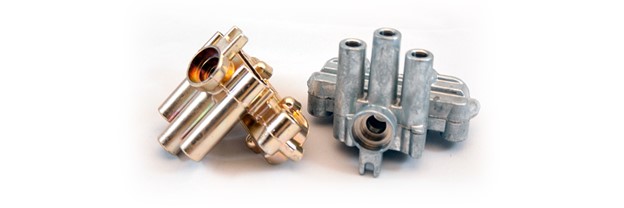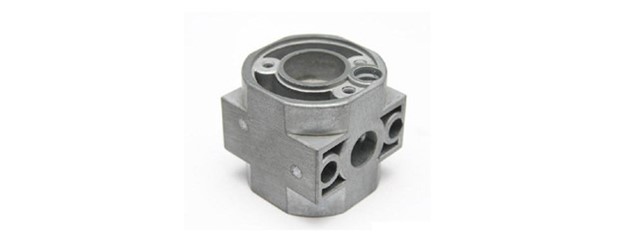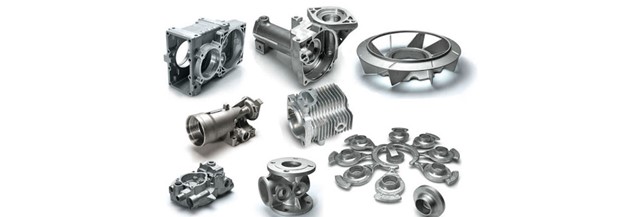Die casting is a manufacturing technique suitable for the production of parts with complex designs that requires accuracy and large-scale production. The technique is compatible with metals, with popular ones being zinc, magnesium, and aluminum. Of these different materials, zinc die casting vs aluminum die casting is the most common comparison in metal fabrication.
Both materials have unique inherent properties and applications. However, the process further improves these properties. As a result, you need to understand die casting and its effects on the materials. This article compares aluminum die casting and zinc die casting so you can understand them and how to use the correct one.
Differences Between Zinc Die Casting vs Aluminum Die Casting

Aluminum die casting and zinc die casting exhibit unique properties which determine their applications. Below are the common parameters that can allow you to differentiate both materials and choose the right one:
Weight
Zinc alloys have a high density similar to steel, which portrays them as stronger and heavier than most die casting materials. Pure zinc has a specific density of 5g/cm3 compared to aluminum’s 2.7g/cm3. As a result, of its high density, it has a high impact resistance than aluminum parts and is the choice of material for making castings for structural applications.’
Properties
The major distinction between zinc die casting and aluminum parts are based on their mechanical properties. Below are the common properties of both die-cast materials and how they differ:
– Melting Point
Although denser, zinc has a lower melting point (4200C). The melting point is an important parameter in die casting as it determines the type of die casting process you can use. Zinc’s low melting point makes it more compatible with the hot chamber process.
Aside from that, it also does not lead to the degradation of the mold, improves production, reduces lower production costs, and determines the choice of the casting process. On the other hand, aluminum has a higher melting point (6600C). Hence, it is compatible with the cold chamber process, which, aside from increasing the cost, increases the cycle time.
– Thermal Conductivity
Zinc alloy has better heat conductivity than aluminum die casting as it can efficiently absorb and dissipate heat. As a result, it is more suitable for producing parts that generate high heat or work with heat and need to dissipate such heat efficiently.
Zinc castings are better than aluminum in making die cast components such as heat sinks or in electronics.
– Corrosion Resistance
Zinc castings have better excellent corrosion resistance than aluminum die-casted parts. Therefore, the former is more suitable for projects in harsh environmental conditions.
Tooling Life
Molds used in zinc die casting do not need to be overly strong due to the material’s less abrasive nature and low melting point. Due to these properties (i.e., less abrasiveness and low melting point), there is a reduction in mold damage and tooling cost. Thus, molds used in making zinc castings can last over 1,000,000 shots compared to aluminum’s 100,000 shots.
Surface Finishing
Unlike CNC machined parts, die castings often need secondary surface finishing options. Aside from the process, the type of material also determines whether the part need surface finishing.,
Zinc castings do not have pores after casting, evident in their smoother/patterned surface, and this is unlike aluminum, which can form pores, pits, and blisters during casting. As a result, aluminum casting requires a compensating surface finishing option.
Nevertheless, both castings are subjectable to surface finishing. Also, zinc is more compatible with surface finishing options such as plating, powder coating, painting, electroplating and anodizing.
Applications
Both materials are applicable in several industries. Zinc casting is stronger than aluminum casting. They are the more common home appliance and automotive die casting options. On the other hand, aluminium castings’ strength-to-weight ratio renders it a better material when there is a need for lightweight and strong parts. This is an important criterion for the use of aluminum castings in the aerospace industry.
Cycle Time
Another major parameter to consider in the aluminum die casting vs zinc die casting comparison is the cycle time. Zinc die casting occurs at high pressure, and low melting point, unlike aluminum die casting. For this reason, it has a low cycle time (zinc casting has a cycle rate that is 150-200% higher than aluminum).
Furthermore, the heating of zinc die casting occurs internally, unlike aluminum die casting, which uses the cold chamber process. Aside from that, zinc casting’s efficient heat dissipation means that molten metal will solidify faster. As a result, the cycle time will reduce.
Costs
The cost of production depends on several factors, such as material cost, production process, operator skills, cycle time, surface finishing, etc.
| Zinc Die Casting | Aluminum Die Casting | |
| Weight | Higher | High |
| Melting point | Low | High |
| Thermal conductivity | High | Low |
| Corrosion resistance | Higher | Low |
| Tooling life | High tool longevity | Low tool longevity |
| Surface finishing | Low | High |
| Applications | Automotive, marine, and electronic industry. – Power steering system – Engine component\ – Fuel System | Aerospace, house appliance, medical, automotive. – Lawnmower parts – Power tools – Automotive components |
| Cycle time | Ten times higher | High |
| Costs | High | Low |
When and Why You Should Choose Zinc Die Casting

If you ever get stuck deciding on whether to choose from zinc die casting vs aluminum die casting, below are some factors that put zinc die casting first.
Parts with Thin Walls
Zinc die casting is suitable for making parts with thin walls due to their strength compared to other materials. When used, you don’t have to worry about the part’s structural integrity, as the denseness of the material helps in its stability. Furthermore, this will reduce the material used and the die-casting cost.
Harsh Environmental Conditions
Zinc die casting is applicable in harsh environmental conditions, especially those that can lead to corrosion. The casting’s immense corrosion resistance ensures the formation of a protective layer on the parts when used in such conditions.
Lesser Residual Stress
Die casting utilize pressure to force the molten metal into the die. There are two die casting processes based on the use of pressure (high and low-pressure die casting), with high-pressure die casting most times causing residual stress on parts.
Zinc die casting occurs via low-pressure die casting. As a result, this reduces the parts’ residual stress.
Die cast mold
Choose zinc die casting when working with a fragile die casting mold. This is because such molds can last about ten times the aluminum die-casting mold. Furthermore, choose zinc die casting if you have limited capital to cover the tooling cost.
Faster Production
Zinc alloys have a low melting point and require a hot chamber die-casting process that occurs at high-pressure injection. This will increase the cycle rate more than other materials. In zinc die casting, the zinc is melted in the machine unlike in aluminum die casting where the operator melts the aluminum outside the machine before ladling it into the injection machine.
When and Why Choose Aluminum Die Casting

When choosing between aluminum die casting and zinc die casting parts, below are some conditions where you should consider aluminum die casting over the other:
Strength-to-weight ratio
Aluminum die casted parts are known for their lightweight and high tensile strength. Therefore, you should consider them if you are looking for such properties. Die cast parts made from aluminum are popular in the aerospace industry due to their lightweight.
High operating temperatures
Aluminum die castings are the preferred choice for operating temperatures with high temperatures, such as in metallurgy. This is due to their high melting point, which ensures they retain their structural and physical properties on exposure to such a high temperature.
Electrical conductivity
Aluminium die-castings are highly electrically conductive, making them the better option for several electronic die cast components. For example, it is important in EMI shielding to protect parts from electromagnetic signals.
Get Your Zinc or Aluminum Die Casting Parts
Choosing between aluminum die casting and zinc die castings is not always easy. Do you need a hand? RapidDirect is a Chinese-based rapid prototyping service provider that provides a quality-focused die casting service. We offer the materials such as magnesium, aluminum, and zinc alloys, for several industrial applications.
We have powerful die casting capabilities for manufacturing highly tolerant and precise parts. This includes state-of-the-art facilities and an engineering team with high experience in die casting. Aside from manufacturing, we follow a strict quality inspection for better quality assurance.
Get high-tolerance and precision zinc and aluminum parts at a competitive price and fast lead time. Visit our website and upload your CAD files on our online quotation platform to get instant quotations. This also comes with an automated DfM report and the ability to manage your order and track the milling process until delivery!
Conclusion
Aluminum and zinc die castings are strong and durable. However, choosing from any requires understanding the materials’ inherent and die-casting-imposed properties. This article made zinc die casting vs aluminum die casting comparison so that you can effectively choose the right one for your project.
FAQs
Zinc die casting parts is stronger than aluminum die casting. According to enthusiasts, zinc die casting is stronger than many common non-ferrous alloys. Compared to aluminum die casting, zinc alloys are 2.5X stronger than aluminum die casting.
The two castings differ in their weight, corrosion resistance, melting point, and thermal conductivity. Zinc casting is heavier and has a lower melting point, higher corrosion resistance, and better thermal conductivity.
Aluminum die casting parts have a lower corrosion resistance than zinc casting. However, this depends on the pH. For example, in alkaline solutions (pH 11), aluminum casting corrosion resistance is identical to zinc.


